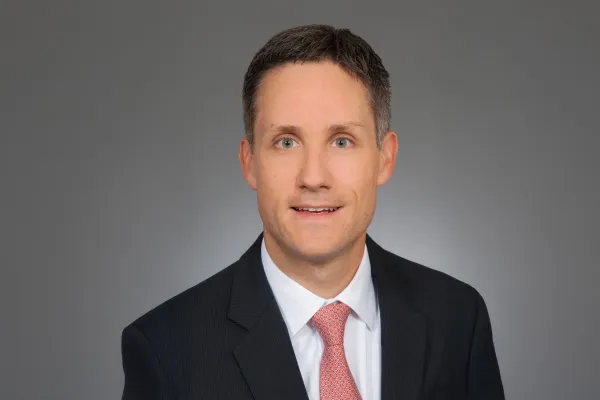India has largely avoided the fallout from the global recession. The economy is likely to grow by more than 5 percent this year and 6 percent in 2010, according to the International Monetary Fund. The stock market has recovered much of last year’s losses, with the Sensex 30 index up 121 percent from its October 2008 low, as of late last month. Interest rates have settled back at around precrisis levels after surging in the aftermath of the collapse of Lehman Brothers Holdings last year.
So why aren’t fund managers smiling?
Last year the country’s mutual fund industry suffered its first net outflow of assets since 2000 — 283 billion rupees ($5.5 billion), compared with inflows of 1.5 trillion rupees the previous year — as the drying up of global liquidity in the wake of Lehman’s failure sparked an investor stampede out of money market and bond funds. Prompt action by regulators stanched the bleeding, and most industry executives see no lasting damage.
[Click here to view the India 20 ranking of the country's biggest money managers.]
Other regulatory changes are having a much bigger impact, though. Over the past year the authorities have altered a number of rules affecting how funds can invest, market themselves and cover distribution costs. The changes are designed to bring greater stability and transparency to the market and encourage long-term investment rather than the short-term churning of assets through new fund launches, a longtime feature of the Indian market. Although many fund managers are confident that the measures will prove beneficial in time, for now they are a source of uncertainty.
"Participants are surely feeling the tremors, and new order has to come," says Nimesh Shah, chief executive officer at ICICI Prudential Asset Management Co., the country’s second-largest fund manager by assets.
Although most fund firms saw their assets fall sharply in the year through March, the list of the industry’s leaders remains remarkably stable, according to the India 20, Institutional Investor ’s exclusive fourth annual ranking of the country’s top fund managers.
Reliance Capital Asset Management Co. extends its lead at the top. The firm boasted $19.5 billion of assets at the end of March, off just 6.7 percent from a year earlier. ICICI Prudential stays in second place despite suffering a 20.6 percent drop in assets, to $9.9 billion. HDFC Asset Management Co., UTI Asset Management Co. and Birla Asset Management Co. round out the top five, as they did last year. Overall, assets of the top 20 firms fell 21.8 percent, to $91.1 billion.
Reliance actively engaged its investors in a bid to counter the impact of market declines. "We tried to reach out to as many partners as we could to communicate our stand and build confidence," says Sundeep Sikka, the fund manager’s CEO. The firm also attracted $3.8 billion in net inflows to two existing medium-term debt funds and one money market fund.
Only two of the top 20 fund managers — LIC Mutual Fund Asset Management Co. and IDFC Asset Management Co. — added new assets over the previous year. LIC leaps from No. 12 to sixth place, having attracted $1.7 billion in assets to its LICMF Liquid money market fund. IDFC, the former Standard Chartered Bank subsidiary that was acquired by India’s Infrastructure Development Finance Co. in May 2008, jumps from No. 17 to No. 11, again on the back of money market funds. Among the biggest losers, Tata Asset Management falls to No. 12 from eighth place, HSBC Asset Management (India) lost 45.6 percent of its assets in dollar terms and falls four places, to No. 15. JM Financial Asset Management faced a major setback and slides from No. 14 to No. 20, having lost both equity and debt assets.
Notwithstanding the industry’s difficulties, foreign firms continue to knock on India’s door. In July, Japan’s Nomura Holdings announced that it would buy a 35 percent stake in state-owned LIC. And last month, UTI Asset Management said it would sell a 26 percent stake to Baltimore-based fund company T. Rowe Price Group.
Although Indian funds don’t have direct exposure to the U.S. market, the industry did suffer badly from the aftereffects of the Lehman bankruptcy. Some 65 percent of mutual fund assets are invested in money market and bond funds, according to the Association of Mutual Funds in India. The bulk of the investors in those funds are Indian companies looking to pick up higher yields on their cash balances. Those companies suddenly found themselves scrambling for liquidity last year when global credit markets froze, and they ran to redeem their fixed-income fund holdings in a desperate bid to raise cash. In September and October 2008, fund industry redemptions amounted to nearly $20 billion, or more than 20 percent of the industry’s total assets. To meet redemptions, fund companies unloaded holdings of bank certificates of deposit and commercial paper in a market devoid of buyers; CD rates surged from a range of 11 to 12.5 percent in early September to 22 percent in the following month.
The selling panic also hit fixed-maturity plan funds. These closed-end funds have a finite life, typically of one to three years, and invest in corporate bonds of the same maturity. They have grown rapidly in recent years because they generally offer higher yields than money market funds. What’s more, in their zeal to market such funds, many fund firms had given investors the option to withdraw early for a modest fee. Needless to say, many investors in these funds ran for the exits late last year.
The result was a classic panic, says Dhirendra Kumar, CEO of Value Research India, a fund research company. "It was a situation where liquid funds owned illiquid assets, and what should have been illiquid funds," he adds, referring to fixed-maturity plans, "offered liquidity."
The Securities and Exchange Board of India, which regulates mutual funds, and the Reserve Bank of India, the central bank, stepped in aggressively in October to stem the crisis. The central bank opened a special short-term bank credit facility of 200 billion rupees and relaxed restrictions on the lending and buyback of CDs by mutual funds, while SEBI modified its rules to give funds greater discretion to value their portfolios to ease the decline in net asset values. The measures averted a full-fledged run on funds and helped short-term rates move back down to precrisis levels.
"The actions of SEBI and RBI ensured that nothing went wrong, and the fund industry was able to tide over the crisis," says ICICI Prudential’s Shah.
In December 2008 and January 2009, SEBI made two follow-up rule changes designed to prevent abuses by money market funds and fixed-maturity plans. The regulator barred money funds from investing in securities with maturity of over 91 days. In addition, it banned early exits from fixed-maturity plans and required new plans to list on exchanges.
Regulators have steadied the industry, but getting funds back on the growth track could prove more difficult. The rule changes for fixed-maturity plans, which had dominated new fund launches, have led to a dramatic slowdown in the pace of new fund offerings. Asset management companies introduced 73 new funds in the first three quarters of 2009, raising 128 billion rupees, according to AMFI. That was down from 578 funds and 1.4 trillion rupees in the same period of 2008.
More recently, radical changes in the rules governing fund distribution costs have altered the playing field in ways that have yet to play out.
Ever since the Indian mutual fund industry took off in the early ’90s, most inflows have gone to new funds, a result of high-decibel marketing, larger incentives for distributors to sell new funds and the investor’s ease of understanding the performance of units priced at 10 rupees. Over the past three years, SEBI has made a number of changes to slow the practice, including requiring funds to meet distribution costs from the 2.25 percent entry load and not by dipping into fund assets. Previously, most fund companies had spent 5 to 6 percent of their assets on promotion and amortized that cost over five years.
"Because of the warped fee structure and the incentives, distributors were encouraging churn. All these steps will bring more discipline in the industry and bring a long-term approach, which is healthy for the investor," says Naval Bir Kumar, president and CEO of IDFC Asset Management.
More-recent changes promise to have an even bigger impact. In August, SEBI abolished entry loads and required investors to pay distributors directly. The distributor now has to disclose all remuneration, including commissions, that he or she receives from the asset management company. The regulator claims that the new system will increase transparency and provide an incentive for long-term investment.
Although industry executives and analysts say that abolishing the entry load is a step in the right direction, uncertainty about what will replace it is clouding the near-term outlook. "It’s too early to say, but we will have to deal with the pain," says Kumar. "Obviously, distributors are saying their revenues have declined, but nobody is going out of business."
The challenge facing the industry is to demonstrate to investors that distributors provide value. "Transparency in pricing is great for the final investor," says ICICI Prudential’s Shah. "Distributors will have to rework their business models and align their compensation to the advisory route. We are educating distributors and helping them out as much as we can."
The recent changes increase the onus on fund firms and their distributors to compete on the basis of quality advice and customer service, says Value Research’s Kumar. "SEBI has rid the Indian fund industry of many malpractices," he says. "The new pricing structure is a game-changer, and asset managers can forget about growth for the time being till the issues are resolved. Instead, they should focus on important things such as attracting long-term money, ensuring that the investor gets the right advice, improving service quality — and focus on their own profitability."





